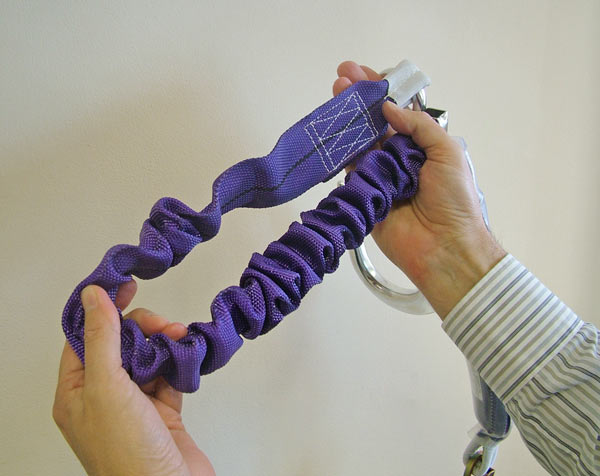Fall Arrest Equipment Inspection Guide
Inspecting fall arrest equipment made from webbing or rope
The following information may prove useful for anyone supplying fall arrest equipment incorporating energy-absorbing lanyards made from webbing. It gives generic advice on inspection regimes for this equipment where it is used to provide protection against falls from a height. However, many of the principles can also be applied to non-energy-absorbing lanyards and safety harnesses used for the same purpose. They can also be applied to similar equipment made from rope. It does not cover other equipment such as anchor points. Employers should consult the manufacturer and/or supplier of the equipment for any product-specific inspection requirements.
Introduction
An energy-absorbing lanyard is a line for connecting a full body harness to an anchorage point with an inbuilt device that reduces the impact of a fall. There is a wide range of possible causes of degradation of synthetic fibres used in webbing and rope lanyards (including abuse, general wear and tear, edge/surface damage, ultraviolet light, dirt, grit, chemicals).
Research involving synthetic fibre webbing lanyards has confirmed a number of the potential causes of degradation. It also highlighted that there is no well-defined boundary (eg usable life) separating those lanyards that are safe and those that are not (eg a 1mm cut in the edge of a lanyard can result in a 5 to 40% loss of strength depending on the make of lanyard being used). It is therefore essential that if lanyards are to be maintained to provide the required level of protection they are subject to an effective inspection regime.
Legal requirements and standards
The Personal Protective Equipment at Work Regulations 1992 (as amended) require employers to maintain fall arrest equipment in good repair, including appropriate replacement. In addition, the Work at Height Regulations 2005 require that equipment which is exposed to conditions causing deterioration which is liable to result in dangerous situations should be inspected at suitable intervals and each time exceptional circumstances which might jeopardise safety have occurred.
BS EN 365:2004 Personal protective equipment against falls from a height. General requirements for instructions for use, maintenance, periodic examination, repair, marking and packaging gives general requirements for periodic inspection, instructions for use and marking of PPE against falls from a height. To counter the causes of degradation listed in the Introduction, the British Standard states that components should be examined 'at least twelve-monthly'. This is sometimes taken to be 'annually', although manufacturers of textile products usually recommend inspection more frequently than this.

Inspection regime
The inspection regime recommended in this leaflet has been discussed with representatives of manufacturers, suppliers, installers and major users via the British Standards Institution Technical Committee PH/5 (industrial safety belts and harnesses), the British Safety Industry Federation Height Safety Group and the Work at Height Safety Association.
Employers should establish a regime for the inspection of lanyards that is drawn up by a competent person. The regime should include:
- the lanyards to be inspected (including their unique identification);
- the frequency and type of inspection (pre-use checks, detailed inspection and,
- designated competent persons to carry out the inspections;
- action to be taken on finding defective lanyards;
- means of recording the inspections;
- training of users; and
- a means of monitoring the inspection regime to verify inspections are carried out accordingly.
Source: HSE Health and safety Executive website 2012